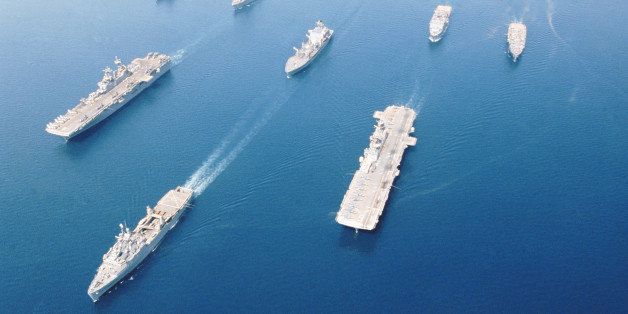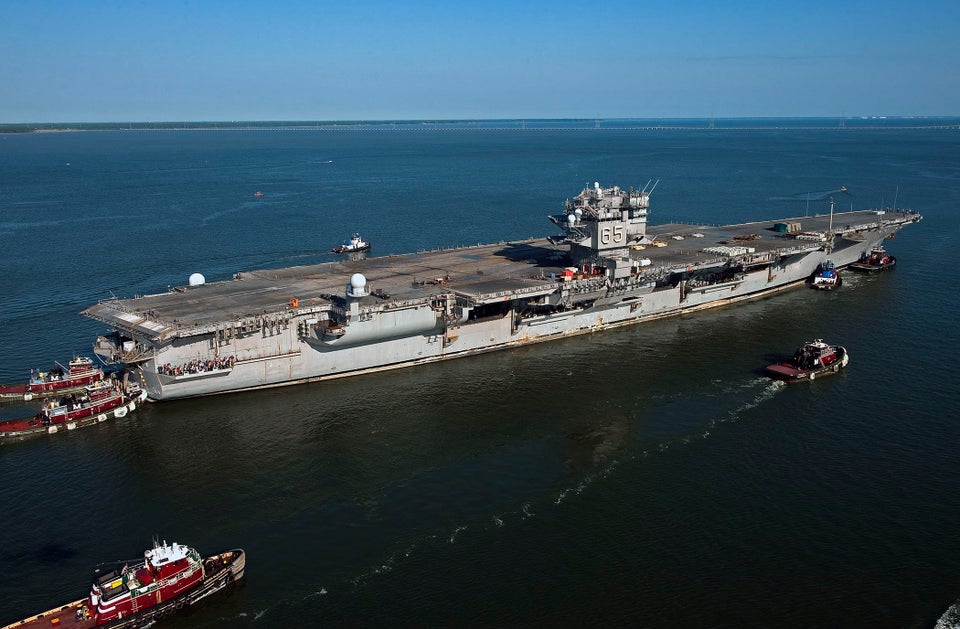
By Andrea Shalal-Esa
WASHINGTON, Sept 12 (Reuters) - Top U.S. Navy officials warned Congress that any further delays or cuts in funding would undercut the readiness of the declining submarine fleet, already slated for reduction by nearly 30 percent to 52 ships from 73, before an expected 2030s' rebound.
Even as missile threats grow, the Navy's ability to keep its attack and guided missile submarines deployed around the world will be lessened by 40 percent over the next 15 years, the officials told the sea-power subcommittee of the House of Representatives Armed Services Committee.
They said military commanders already wanted twice as many submarine patrols as they could supply, citing a growing importance of the undersea domain for telecommunications cables, pipelines, increased shipping, and oil drilling, as well as shrinking ice in the Arctic.
Rear Admiral Richard Breckenridge, director of undersea warfare, and Rear Admiral David Johnson, program executive officer for submarines, said budget decisions in the 1990s shrank the U.S. submarine fleet by 12 ships, and that mandatory budget cuts would exacerbate the situation.
Under the 2011 Budget Control Act, the Pentagon must cut spending by $500 billion over the next decade, on top of $487 billion in already planned cuts. The first round took effect in March, with more reductions slated for Oct. 1, although U.S. defense officials are still hoping Congress might reverse the cuts required under sequestration later in the year.
Its situation is particularly dire, the Navy says, since it is to pay around $60 billion in the coming years to develop and build a new ballistic missile submarine, while replacing aging submarines, surface warships and carrier-based fighter jets. They also need to restart torpedo production after 48 years.
The officials told lawmakers they were taking steps to address a potential "submarine gap" by building submarines faster, increasing deployment times, and extending the service life of existing ships. But they could not accept any more delays in plans to replace nuclear-armed Ohio-class submarines after having delayed the program by two years already, they said.
Breckenridge said Ohio-class submarines were vital because they are a critical part of the U.S.'s nuclear deterrent. It is "mind-staggering," he added, that the country has already decided to delay the program by two years and allow the total number of such submarines to fall to 10 from the present 14.
"That's just an astronomical challenge for us to be able to maintain our vibrant and credible two ocean deterrent to deter bad behavior from powerful adversaries," he said.
Breckenridge said there was no margin for further delays as the life of the current ballistic missile submarines cannot be extended, and the already aggressive schedule for building the lead ship in the new class could not be accelerated.
The Navy officials urged Congress to approve about $4 billion a year in supplemental funding for the Ohio-class replacement program when construction begins around 2021, or around $60 billion during the 15-year building period for the ships.
Without such funds, the Navy could face "devastating" cuts in other shipbuilding accounts, Breckenridge said. If Congress only approved half that amount, the Navy could be forced to give up 16 other ships - four attack submarines, four large surface ships and eight smaller ones, he said.
Breckenridge and Johnson said they were working hard to ensure the lowest possible cost of the ballistic missile submarines, and had implemented incentive fees with General Dynamics Corp, aimed at achieving much lower lifetime operating costs for the new ships.
They said they were also working on a cost-saving multi-year purchase of 10 more Virginia-class ships with General Dynamics and Huntington Ingalls Industries Inc, with a deal seen in the first quarter of fiscal 2014, which begins Oct. 1.
The Navy would apply lessons learned on those ships to the new class of ballistic missile submarines, they said.
For instance, current plans call for the first Ohio-class replacement ship to be built in 84 months, two months less than the much smaller first ship in the Virginia-class. Those ships now take 63 months to build.
Navy officials and industry executives are determined to continue cutting costs, but warn that delaying orders or slowing the pace of production from two Virginia-class submarines a year will drive costs higher again.
Last week, Chief of Naval Operations Admiral Jonathan Greenert said the continuation of sequestration cuts in fiscal 2014 would result in the loss of one Littoral Combat Ship, an afloat forward staging base, a refueling for an aircraft carrier, and advanced procurement funding for a Virginia-class submarine.
If sequestration remains in effect, Johnson estimated the Navy would lose about $750 million in funding from the $5.3 billion requested for the Virginia-class submarines in fiscal 2014. But he was trying to preserve the 10-ship purchase, which runs from fiscal 2014 to fiscal 2018, he said.

